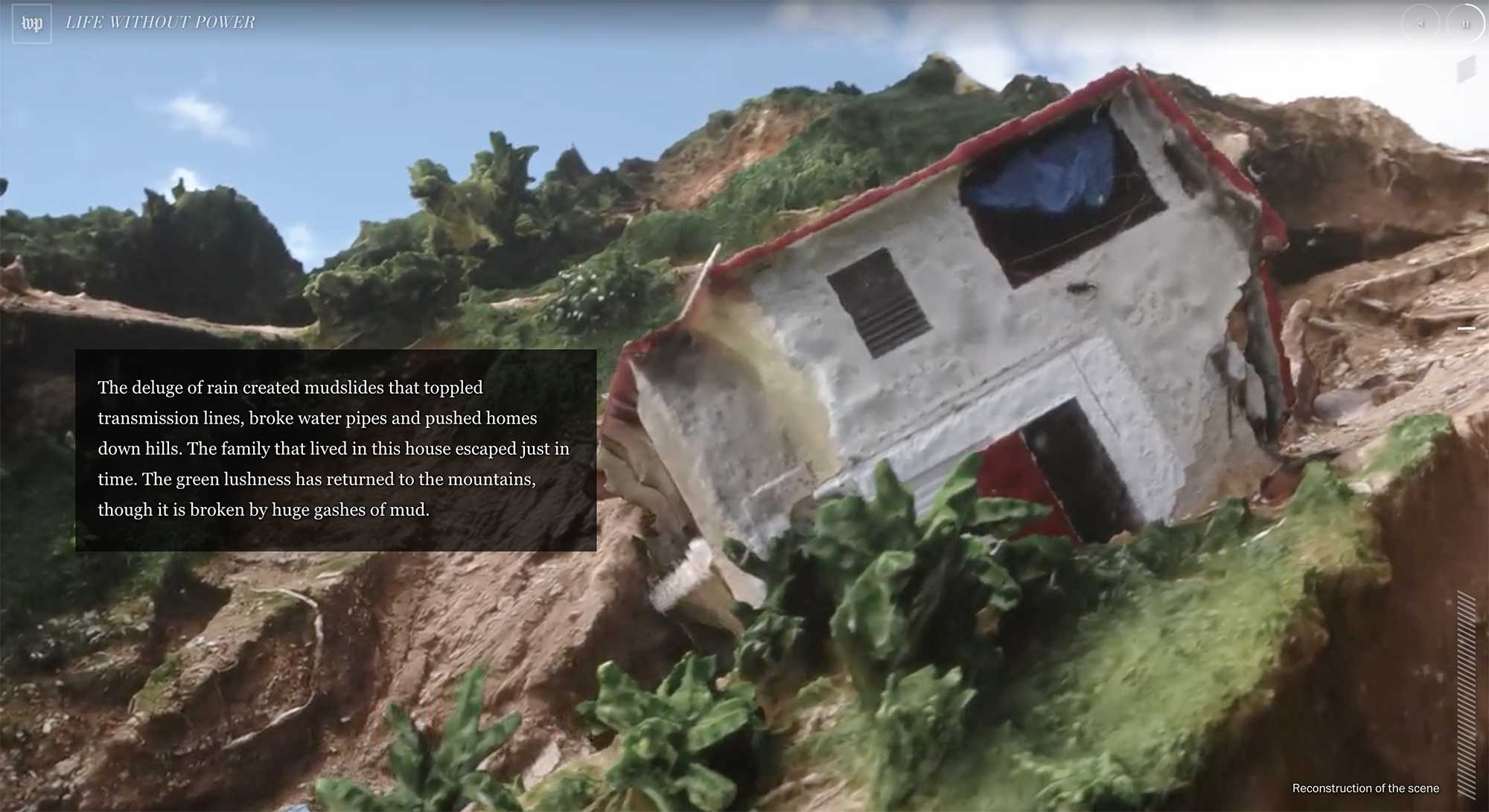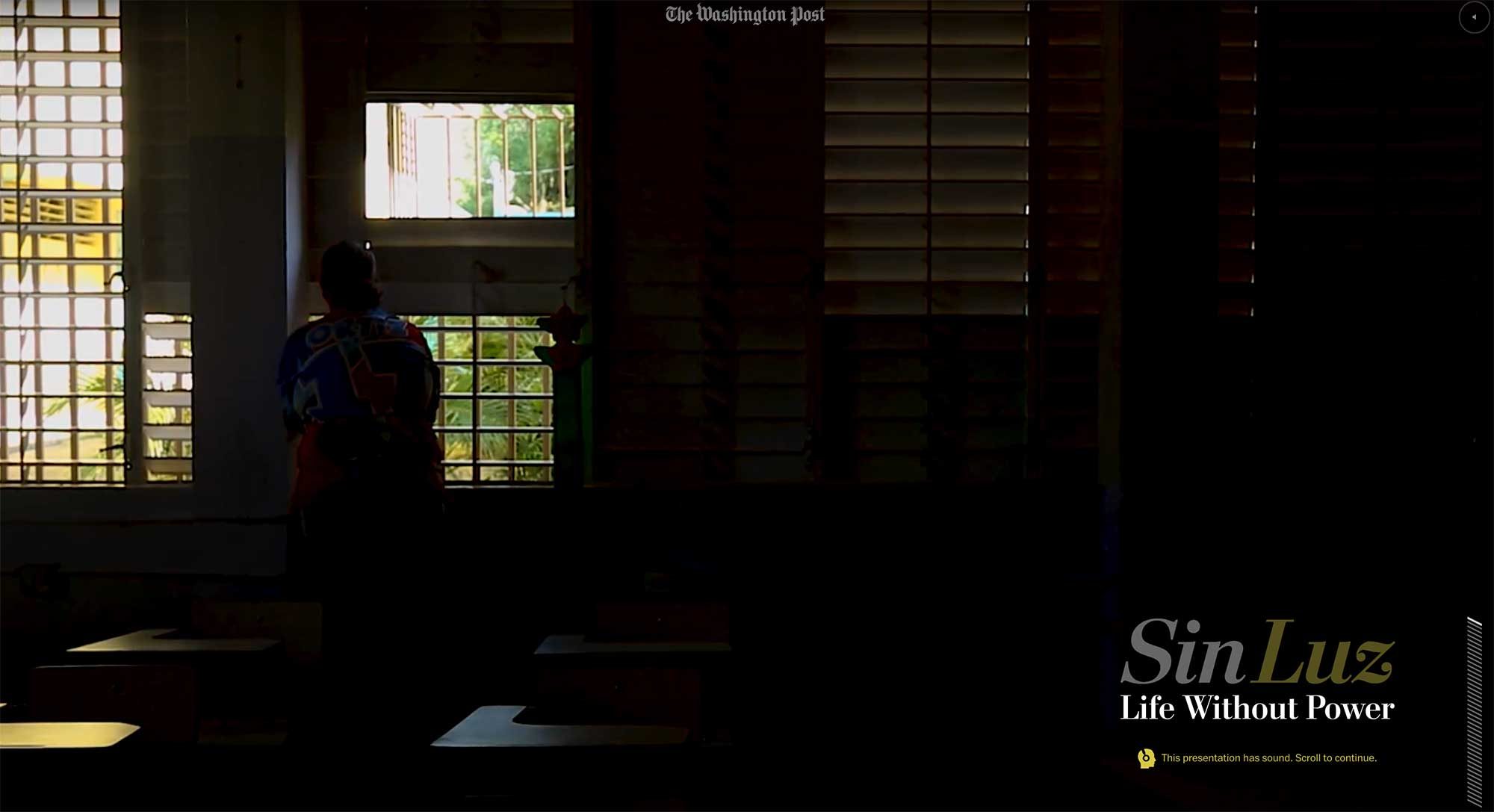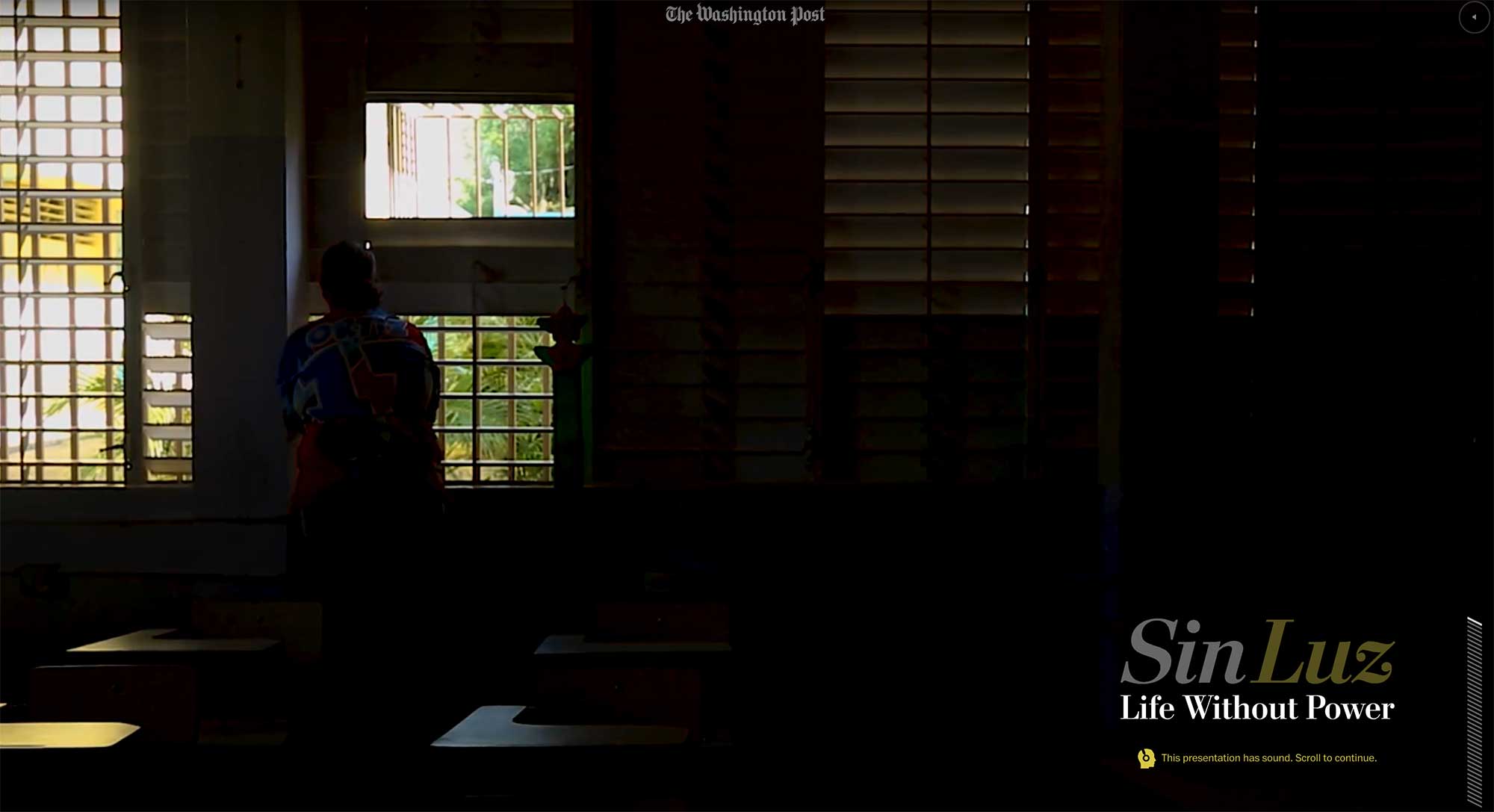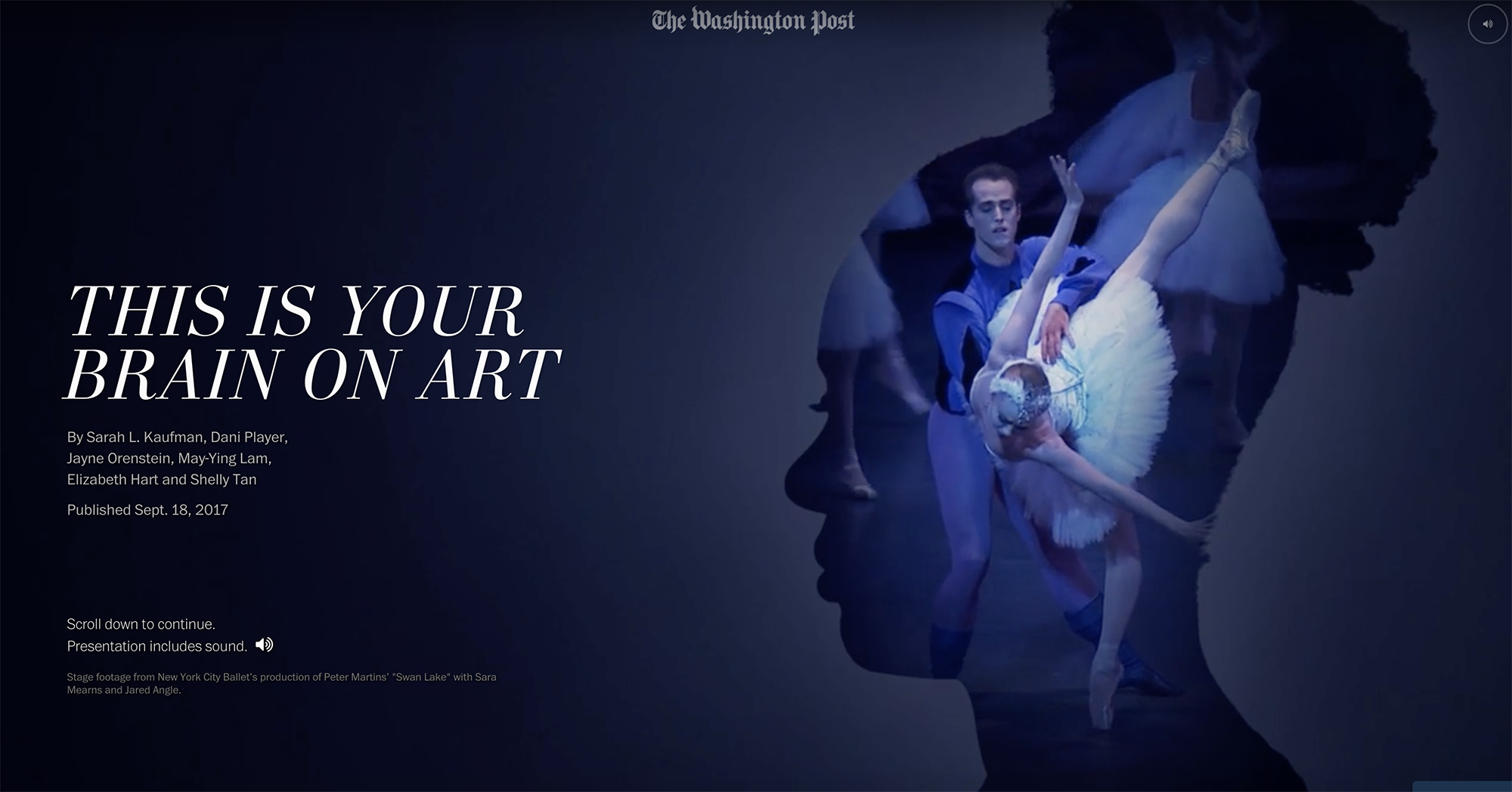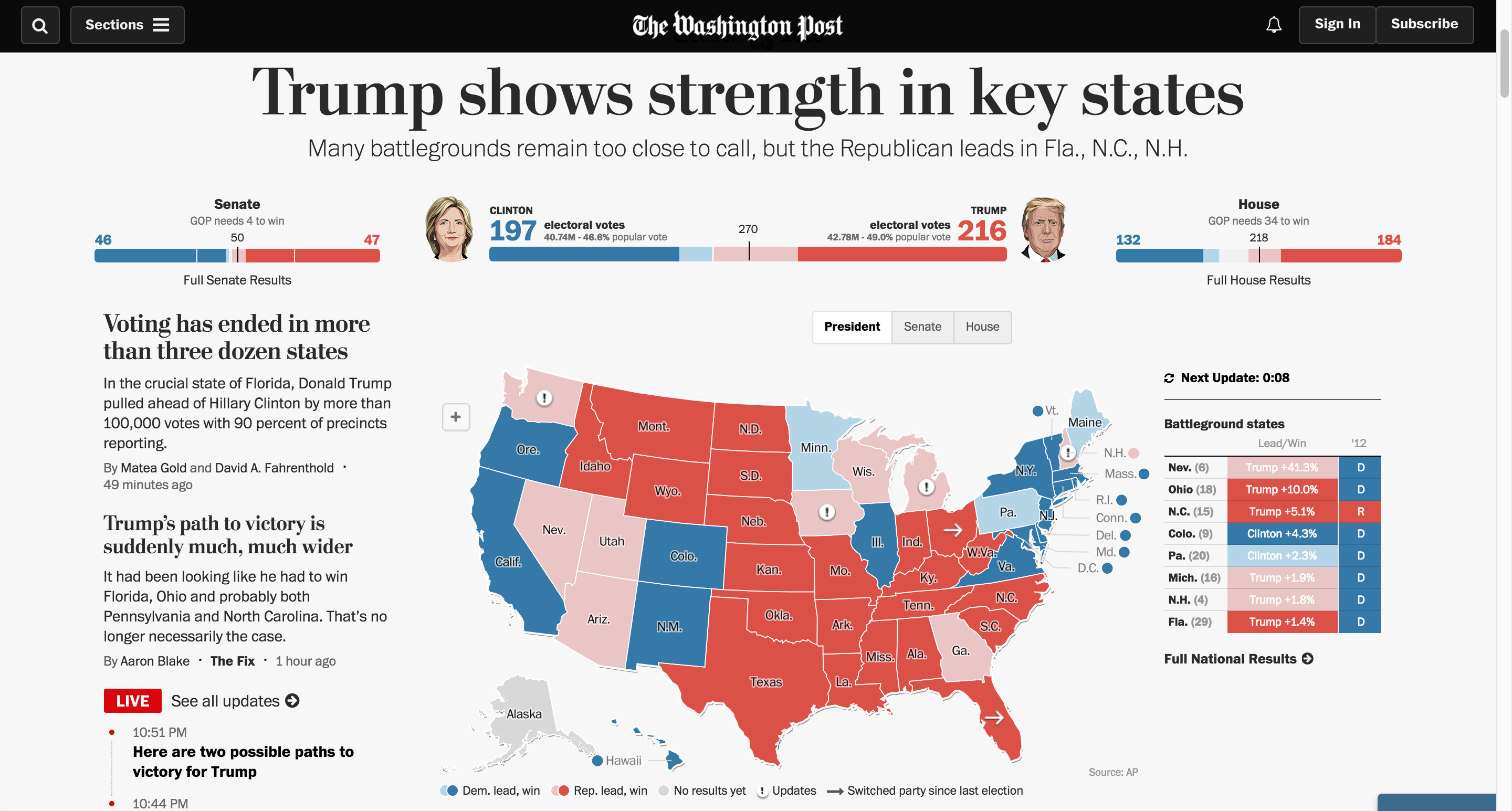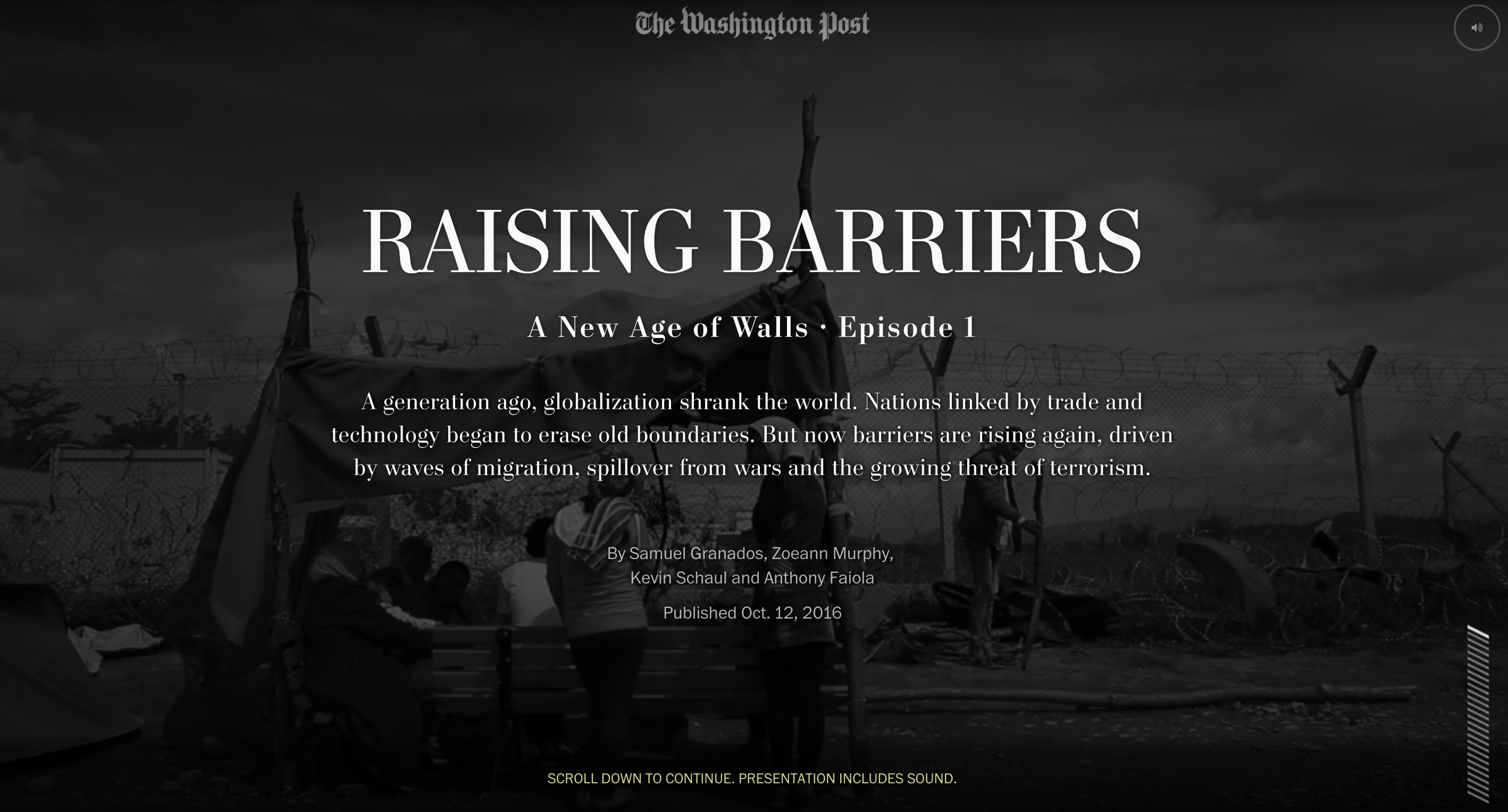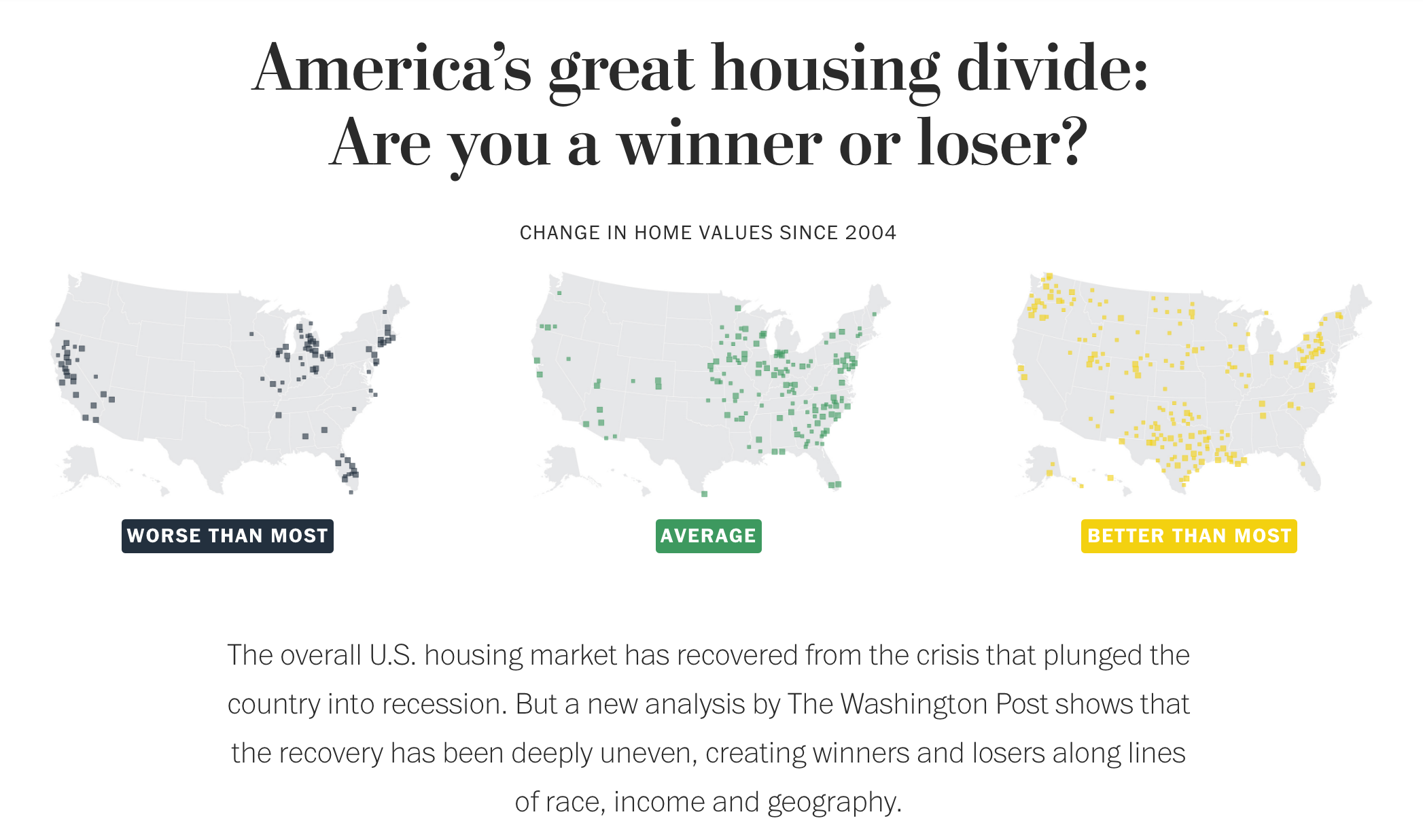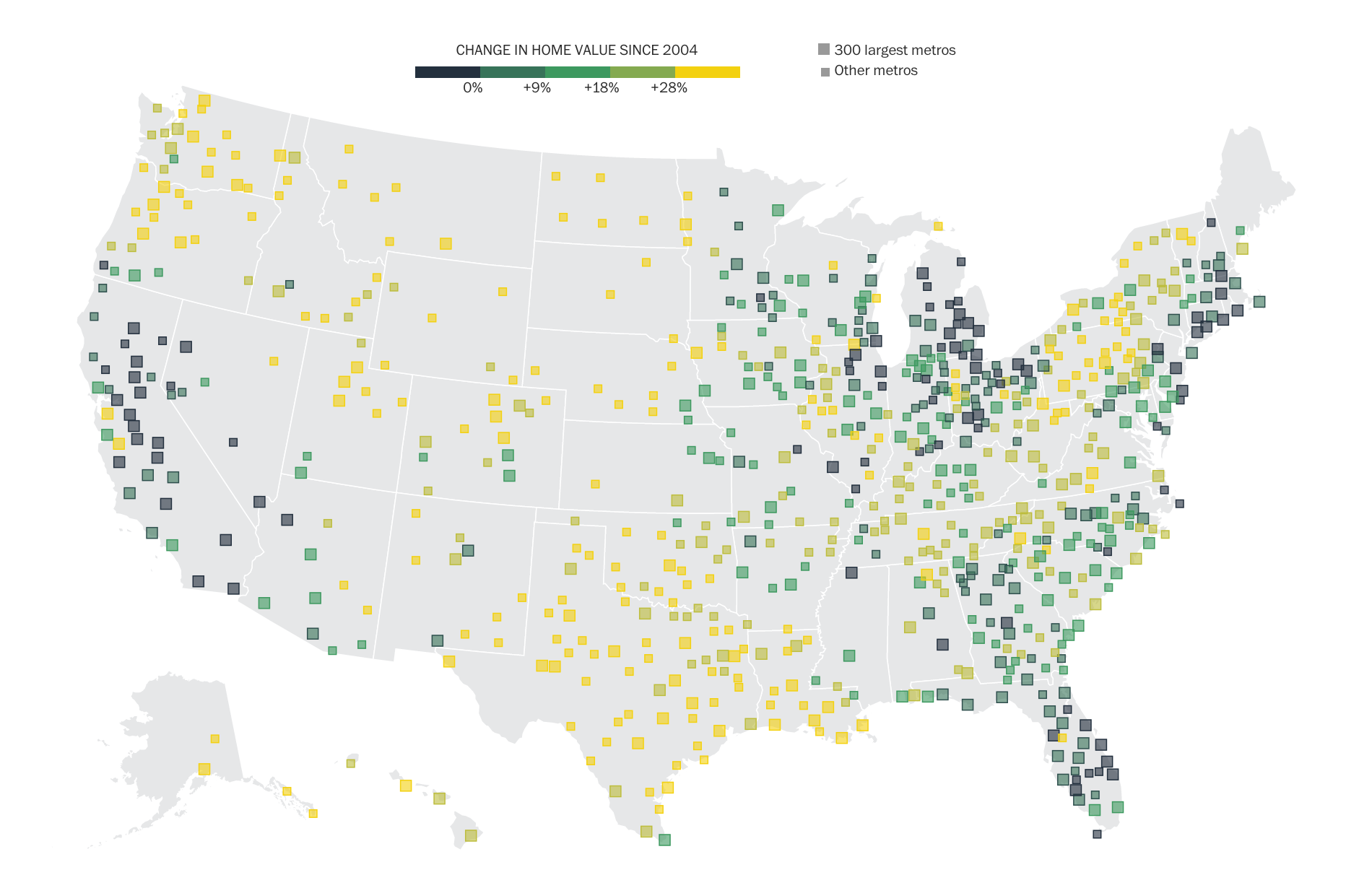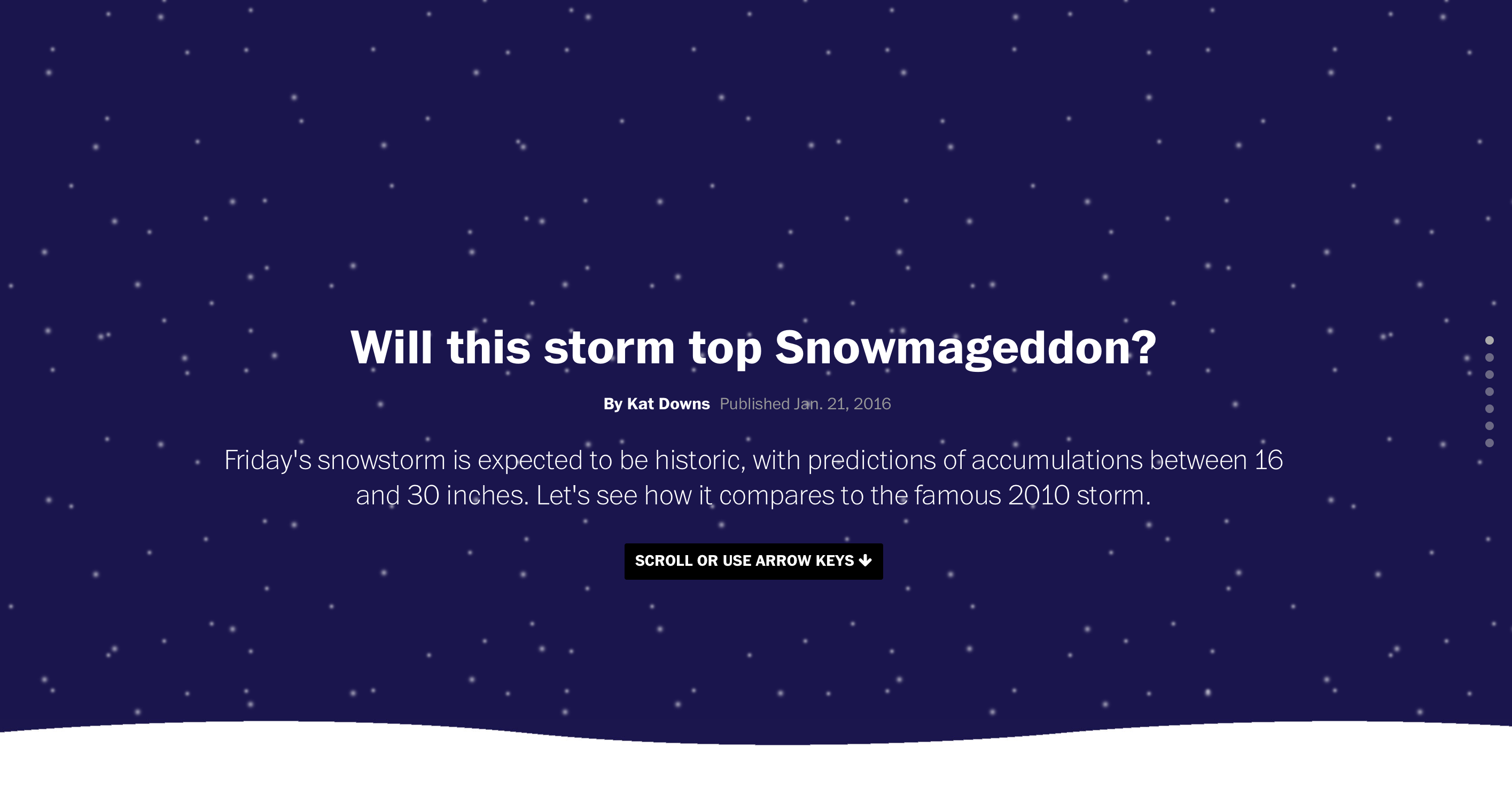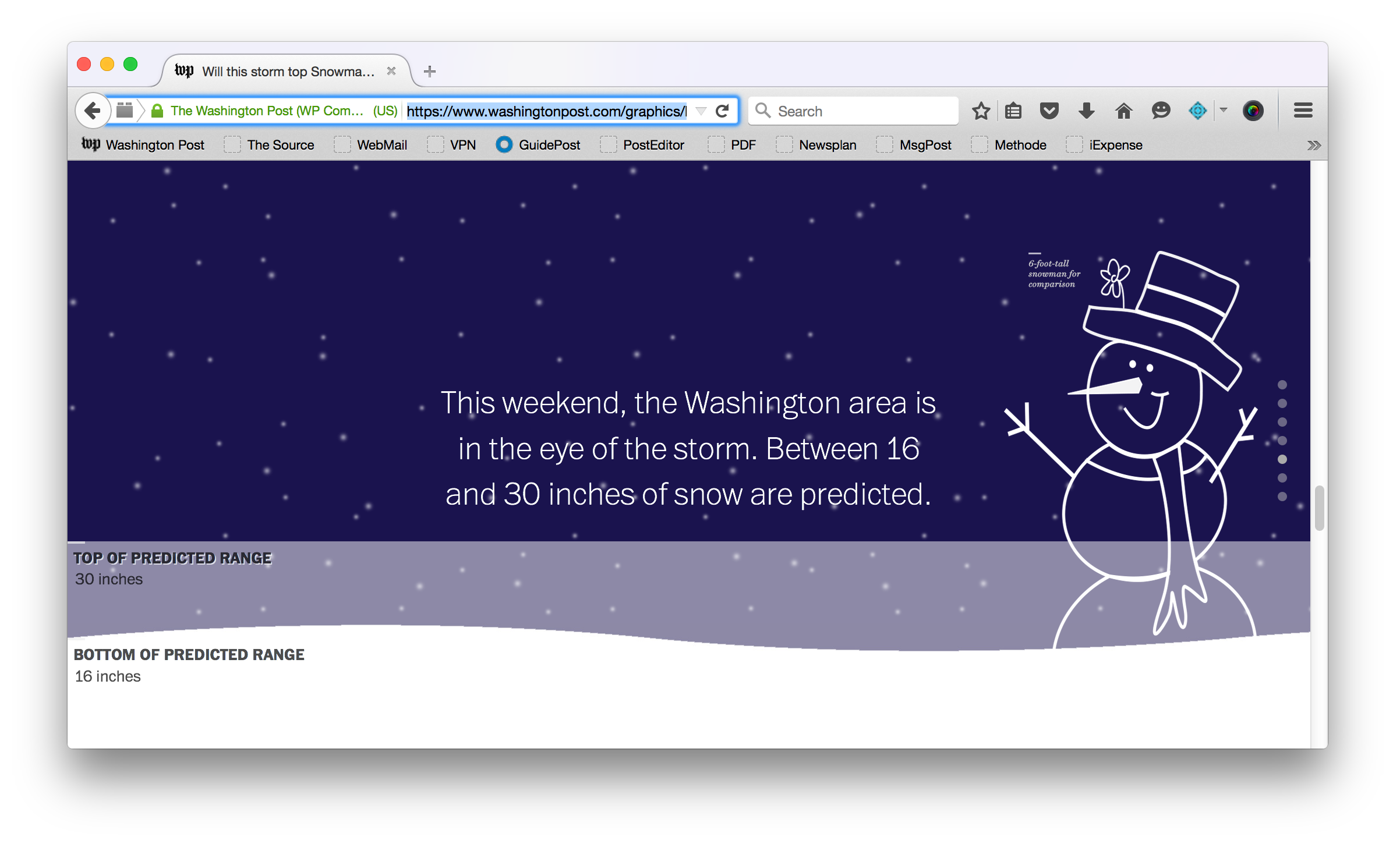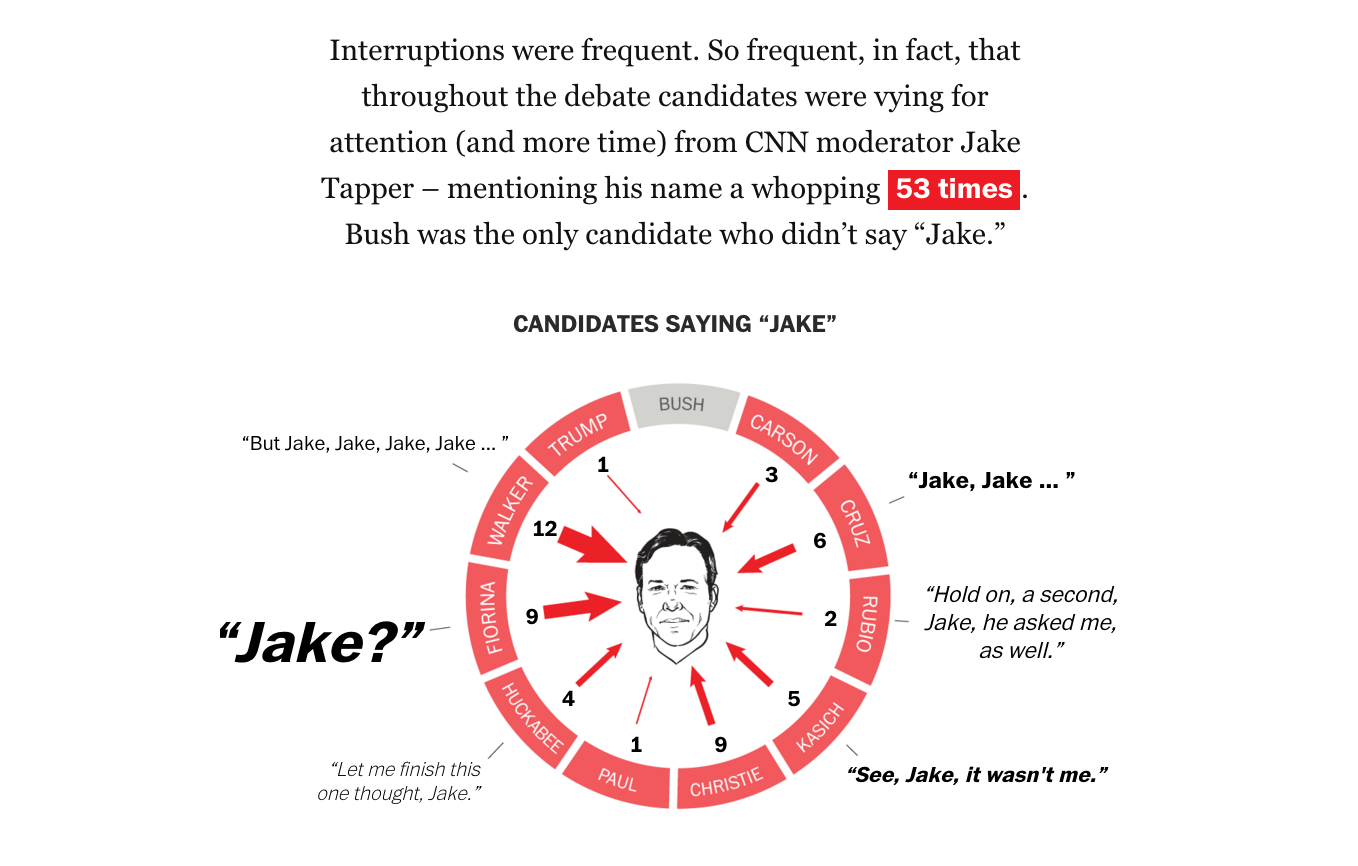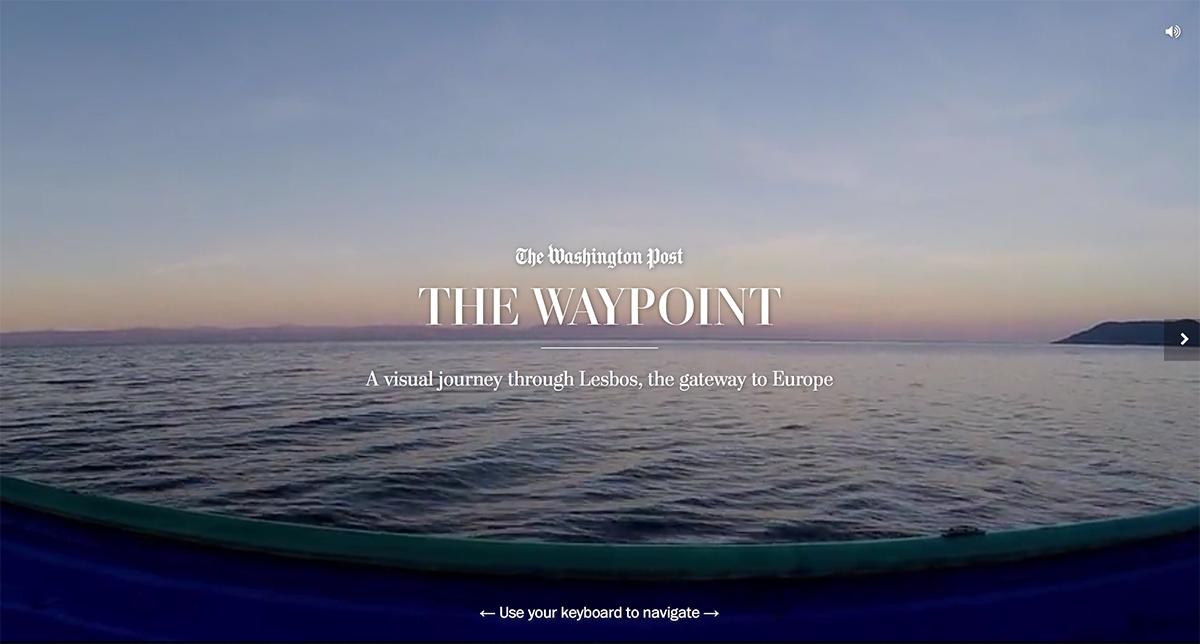
Samuel Granados pitched a trip to Lesbos to tell the story of the migrant crisis in a visual way. I thought it was a great idea, we got the room excited about it and Samuel and Zoeann Murphy went to the island and reported this amazing story. When they returned, we had a ton of material to work with and had to spend quite a bit of time crafting the narrative and story structure.
After a lot of whiteboarding and brainstorming with the team, which also included Emily Chow and Kevin Schaul, I suggested doing a “tap essay,” inspired by Robin Sloan’s project Fish. We’d keep the number of slides succinct and we’d also offer readers the chance to go down different offshoots, but always come back to a central narrative. This was my first sketch of the “offshoot” concept (on the far right of the board):

We decided to pursue that concept and I created a prototype in Keynote, based on Samuel and Zoeann’s notes, visuals, and early narrative constructs, that demonstrated the functionality of the tap essay and the offshoots:
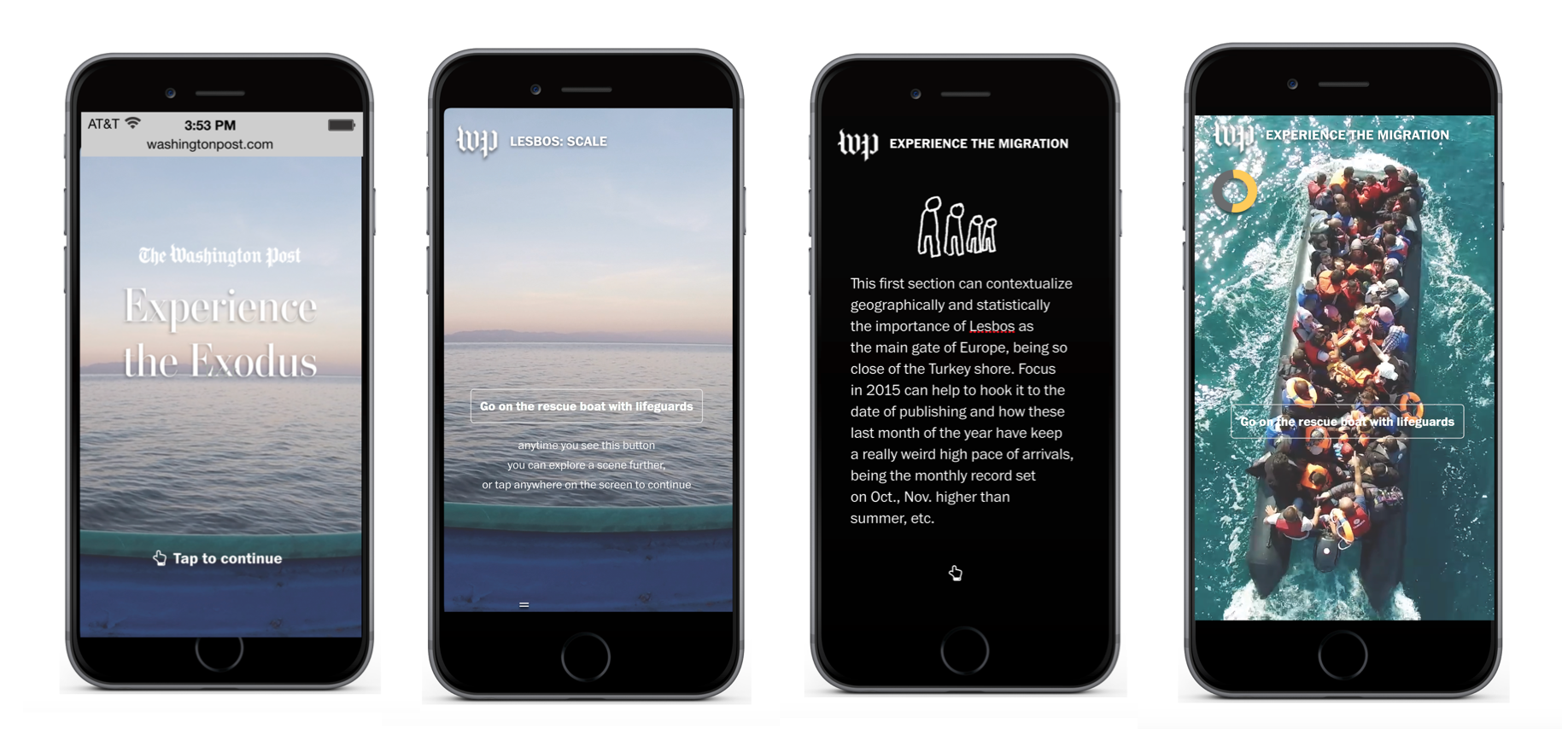
That very first UI prototype was taken from concept to reality through some truly impressive, smart and endlessly creative work by Samuel, Kevin, Zoeann and Emily, and with some important help from Griff Witte, our correspondent in the area.
We really wanted the experience to feel simple, elegant and powerful. We didn’t want extraneous UI to interfere with the user’s natural behavior as they moved through the story. We had a fantastic completion rate on the project and we found that more than half of people opted in to the offshoots.
This story was an amazing collaborative effort driven by visual reporting. I love how it works beautifully, but differently, on desktop and mobile devices — mostly due to some really smart engineering by Kevin!
The title “The Waypoint” was one of my contributions. I love headlines!
Role: Editing, storyboarding, prototyping, some design and light development.
Awards: National Press Foundation Best Use of Technology in Journalism Award; Pictures of the Year International 1st place in Online Feature Story Editing; White House News Photographers Association Honorable Mention for Best Multimedia Package
